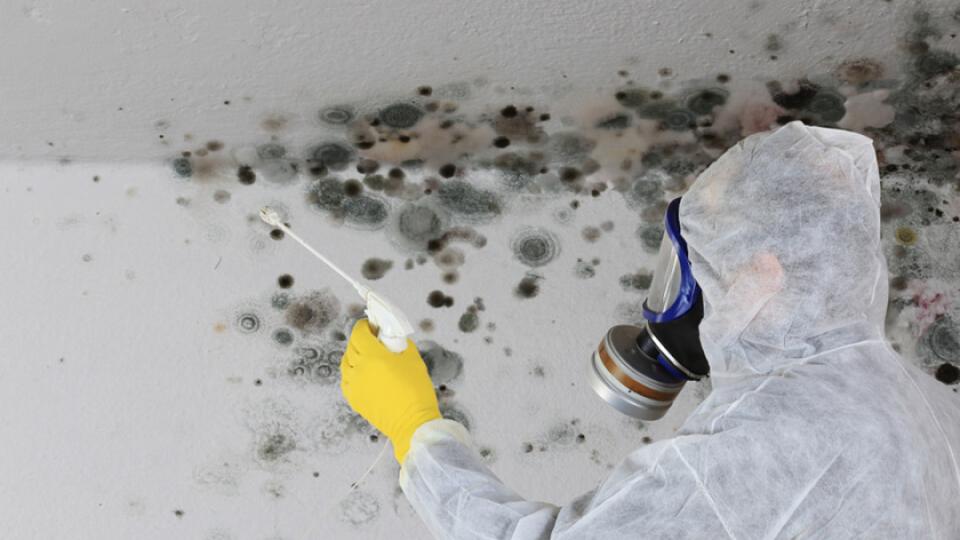Mold infestation is a common problem in many homes and can have serious implications on both your health and the structural integrity of your property. Recognizing the signs of mold is crucial to take prompt action and protect your home and loved ones. In this comprehensive guide, we will explore the telltale signs of mold infestation and provide insights into the essential steps of mold remediation.
1. Musty Odor: A Foul Hint of Mold's Presence
The presence of a persistent musty odor is often the first sign of mold infestation. If you notice a lingering smell, particularly in damp or poorly ventilated areas, it could indicate the presence of hidden mold. Be attentive and follow your nose to identify potential problem areas.
2. Visual Clues: Spotting Mold Growth
Mold can appear in various colors and textures, making it essential to recognize its visual cues. Black, green, or white patches on walls, ceilings, or other surfaces are indications of mold growth. Pay attention to areas prone to moisture, such as bathrooms, basements, and kitchens, which are especially susceptible to mold infestation.
3. Allergic Reactions: Unexplained Health Symptoms
Experiencing unexplained allergic reactions can also be a telltale sign of mold in your home. Mold spores can trigger respiratory issues, including coughing, nasal congestion, sneezing, and even allergic rhinitis. If you or your family members experience these symptoms, it's essential to investigate the possibility of mold infestation.
4. Water Damage: A Breeding Ground for Mold
Areas affected by water damage, such as leaks, floods, or plumbing issues, create favorable conditions for mold growth. Mold thrives in moist environments, and even small amounts of water intrusion can lead to significant infestations. If you've had water-related incidents, closely monitor the affected areas for signs of mold.
5. Peeling Paint and Wallpaper: Concealed Mold Colonies
Peeling paint or wallpaper can be indicative of moisture problems in the walls. The trapped moisture provides an ideal habitat for mold growth, which can then spread behind the surface, hidden from plain view. If you notice peeling or bubbling surfaces, it's essential to investigate further to determine if mold is present.
6. Increased Humidity: A Favorable Environment for Mold
High humidity levels in your home can create an environment conducive to mold growth. Areas with poor ventilation, excessive condensation, or persistent humidity above 60% can promote mold infestation. Use a humidity monitor to regularly check and maintain optimal levels to prevent mold from thriving.
7. Structural Damage: Signs of Mold Within
Mold can cause structural damage to your property over time. Keep an eye out for warped or buckled walls, sagging ceilings, or deteriorating wooden surfaces. These can be indications of mold growth within the structural components of your home, warranting immediate attention and mold remediation.
8. Lingering Moisture: A Warning Sign
Persistent moisture problems, such as recurring leaks or condensation issues, can create a perfect breeding ground for mold. Regularly inspect areas prone to moisture, such as under sinks, around windows, or near HVAC systems. Address any moisture-related issues promptly to prevent mold growth.
9. Adverse Health Effects: A Call for Mold Remediation
Long-term exposure to mold can cause severe health problems, especially for individuals with allergies or respiratory conditions. Symptoms may include persistent headaches, fatigue, dizziness, and even respiratory infections. If you or your loved ones experience these health issues, consult a medical professional and consider professional mold remediation.
Mold Remediation: Addressing the Issue
If you suspect a mold infestation in your home, it is crucial to take prompt action to protect your property and the health of your family. Effective mold remediation involves several steps:
1. Inspection: Hire a professional mold inspector to assess the extent of the infestation and identify the type of mold present. This serves as the foundation for developing an appropriate remediation plan.
2. Containment: Implement measures to prevent mold spores from spreading to unaffected areas. This may involve sealing off contaminated areas, using negative air pressure, and utilizing containment barriers.
3. Mold Removal: Professional mold remediation companies employ specialized techniques and equipment to safely remove and eliminate mold from affected surfaces. This typically includes cleaning, disinfecting, and ensuring proper disposal of contaminated materials.
4. Moisture Control: Address the underlying cause of moisture and humidity issues to prevent future mold growth. This may include repairing leaks, improving ventilation, and implementing moisture barrier systems.
5. Prevention: Establish preventive measures to minimize the risk of future mold infestation. Regular maintenance, moisture monitoring, and adequate ventilation can help keep mold at bay.
Recognizing the signs of mold infestation is crucial for prompt mold remediation and protecting your home and loved ones. By familiarizing yourself with the telltale signs outlined in this comprehensive guide, you can take decisive action if you suspect the presence of mold. Remember, professional mold remediation is usually the most effective approach to ensure thorough removal and prevent future infestations. Prioritize your well-being and maintain a healthy living environment by addressing mold issues promptly and professionally with a TrustDALE certified professional, where you're always protected by The TrustDALE $10,000 Make It Right Guarantee™.

